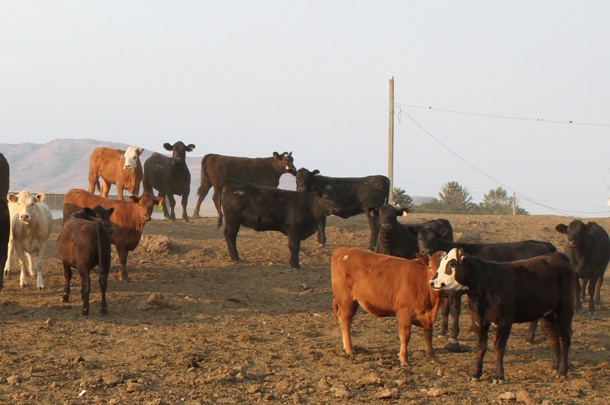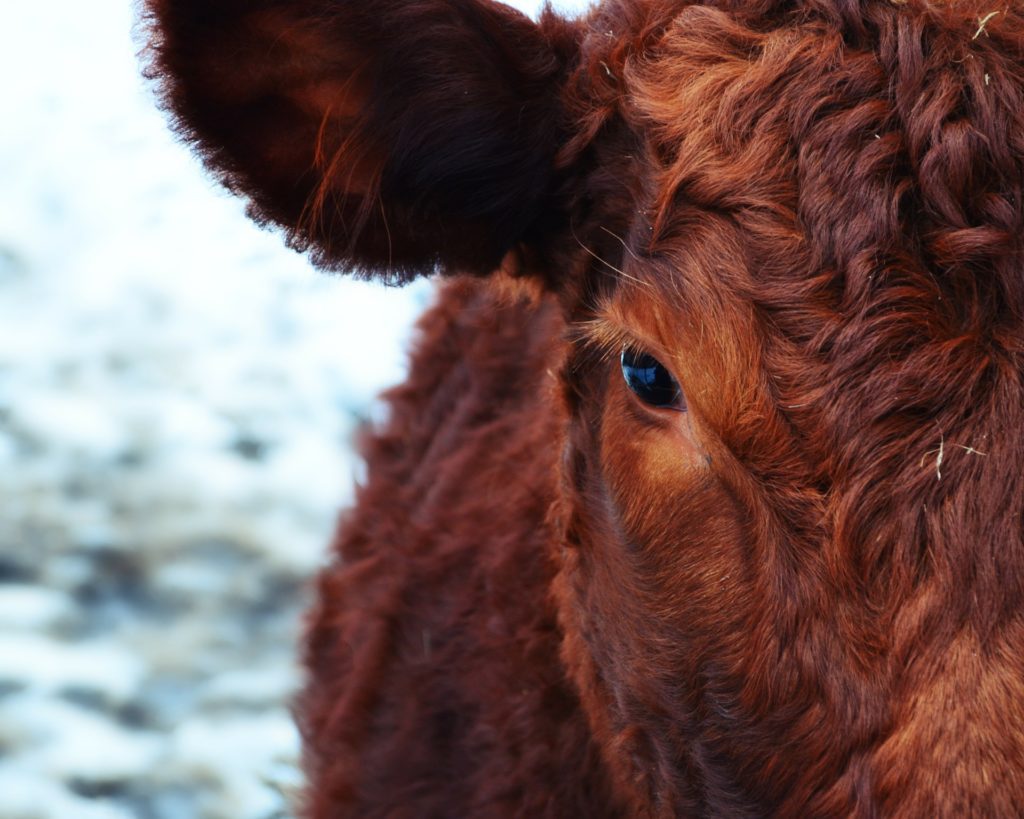Cattle are typically marketed and transported several times in their lives. Marketing and transportation can be the most fatiguing and stressful events in a feeder calf’s life.
Each move not only stresses calves and increases the risk of bovine respiratory disease and associated death, but it also results in weight loss that must be regained after arrival. In addition, shipping cattle typically involves feed and water deprivation that contributes to weight loss. This liveweight loss in cattle is commonly called shrink. Shrink can also refer to weight loss in carcasses or retail cuts. In addition to reduced liveweight and carcass yield, transport and handling stress can negatively impact meat quality.
Factors affecting shrink
Several factors impact shrink, including transit time, transit distance, environmental conditions (weather and transit conditions), cattle handling methods and cattle management (including nutrition). The combined effects of shipping and handling result in greater weight loss than holding cattle off of feed and water alone. Transit shrink in beef steers represents up to two-thirds of the shrink from the combination of both fasting and transport.
Weight loss varies depending on the circumstances. A good rule of thumb is that about 0.75% of bodyweight will be lost per day with feed and water deprivation, and the weight loss will not necessarily be the same amount each day. When feed and water are unavailable, cattle shrink about 1% per hour for the first three to four hours and then roughly 0.25% per hour for the next eight to 10 hours. Weight loss can increase dramatically when transport stress is added.
Longer feed and water deprivation and transit times lead to dehydration and higher shrink (Table 1). Recovery to pre-transit weight takes at least three days and can take up to 30 days in severe situations. Typically, it takes one week or less to regain weight lost from shrink. Emphasizing low-stress cattle handling and shipping in minimum time can benefit both buyer and seller by reducing shrink, stress, illness and cost to regain lost weight.

Weanling calves of similar genetics can vary greatly in transit shrink percentages. Cattle with temperament problems may have higher levels of shrink. Pre-weaning management also affects pre-transit weight. Lighter calves experience less percentage shrink than larger calves. Similarly, older cattle tend to lose more weight during transit and feed deprivation than younger cattle, but they also tend to regain lost weight faster.
The amount of fill can affect the degree of shrink. Lush grass, silage and haylage diets usually produce more gut fill than hay or high-concentrate diets. Cattle shipped directly off of milk and grass may undergo a greater percentage shrink than cattle off of a preconditioning or hay and grain diet. In addition, calves shipped directly off of their dams must deal with weaning stress and possible unfamiliarity with feedbunks and water troughs.
Many producers attribute shrink to loss of gut fill alone. Although much of this weight loss is gut fill, feces and urine that can easily be replaced, some is actual loss of fluid from body tissue. Fecal loss accounts for approximately 65% of the total weight lost, and urinary excretions account for about 28% of the weight lost. This leaves 7% weight loss from another source, likely body tissue fluids (from carcass components). Tissue loss takes longer to regain than weight loss from urine and feces. Because muscle contains more water than fat, higher levels of shrink are typically encountered in cattle with higher lean-to-fat ratios. Therefore, cattle frame size, age, sex and body condition can impact the degree of shrink.
Managing shrink
Management strategies to deal with transport stress and to reduce shrink include preconditioning programs, rest periods during and after transit, potassium supplementation and the use of electrolyte solutions. Transported or feed- and water-deprived cattle are challenged with a mild metabolic acidosis, which may be the result of body water loss. Electrolyte solutions or water can help alleviate this dehydration and some stress in transported cattle.
Any added stress such as an overloaded truck, unfamiliarity with confinement, or extreme temperature and moisture conditions can increase shrink. Early-weaned calves maintained on-site before shipping might be more tolerant of the stressors associated with transportation and feedlot entry. Although there is no difference in shrink, there is a notable difference in recovery of lost weight. Early-weaned and preconditioned calves have an advantage over traditionally weaned calves in weight recovery.
Transportation shrink generally varies more between years than between preweaning management systems. This suggests that climatic conditions may be a major factor in bodyweight loss for transported beef calves. Be familiar with weather forecasts and avoid working or transporting cattle during extreme temperatures. Protect animals from weather during hauling.
Shrink can be managed by improving cattle handling conditions. Move slowly and quietly when handling and loading cattle. Avoid rough cattle handling. For cattle working, get help from people familiar to both the managers and cattle. Sort cattle at the ranch of origin. Avoid exposing cattle to strange environments such as new pastures, pens or groups of cattle without first preconditioning them. Select cattle for improved temperament.
Do not overcrowd cattle in trailers. Group them into compartments to take pressure off end animals when the truck starts, turns or stops. Avoid underloading trailers to reduce stress and bruising. Keep trips as short as possible. Prevent equipment breakdowns by maintaining scales, handling facilities, trucks, trailers and other equipment. Allow cattle to rest during long hauls. Avoid transporting cattle on rough roads, and always provide them with good footing.
Provide feed and water to cattle when possible and pay attention to their quality during rest stops and at the destination. Avoid stressful diet changes just before shipping and be sure to allow free-choice access to grass hay. Withhold water two to three hours before shipping. Withhold grain, alfalfa or clover hay at least 12 hours before shipping because these feedstuffs have a laxative effect on cattle. Precondition cattle coming off of lush forages or high-moisture feeds with a dry feed to limit scouring and excessive urination.
Conclusion
Shrink is an inevitable yet manageable part of transporting cattle. Improvements in calf preconditioning programs, pre-transit cattle management, cattle handling, shipping conditions and management after arrival can help both cattle buyers and sellers. Understanding the factors affecting shrink can help producers and their customers make more-informed marketing and purchasing decisions that more accurately and fairly account for shrink. The degree of actual shrink, how shrink is estimated and accounted for in marketing transactions, and how shrink impacts subsequent cattle performance and production costs ultimately influences net returns.
—The full version of this article was originally published by the Mississippi State University extension service.
PHOTO: Recovery to pre-transit weight takes at least three days and can take up to 30 days in severe situations. Photo by Paul Marchant.
SOURCE: Jane Parish, professor at Mississippi State University. Brandi Karisch, associate extension educator and research professor at MissiSssppi State University.











